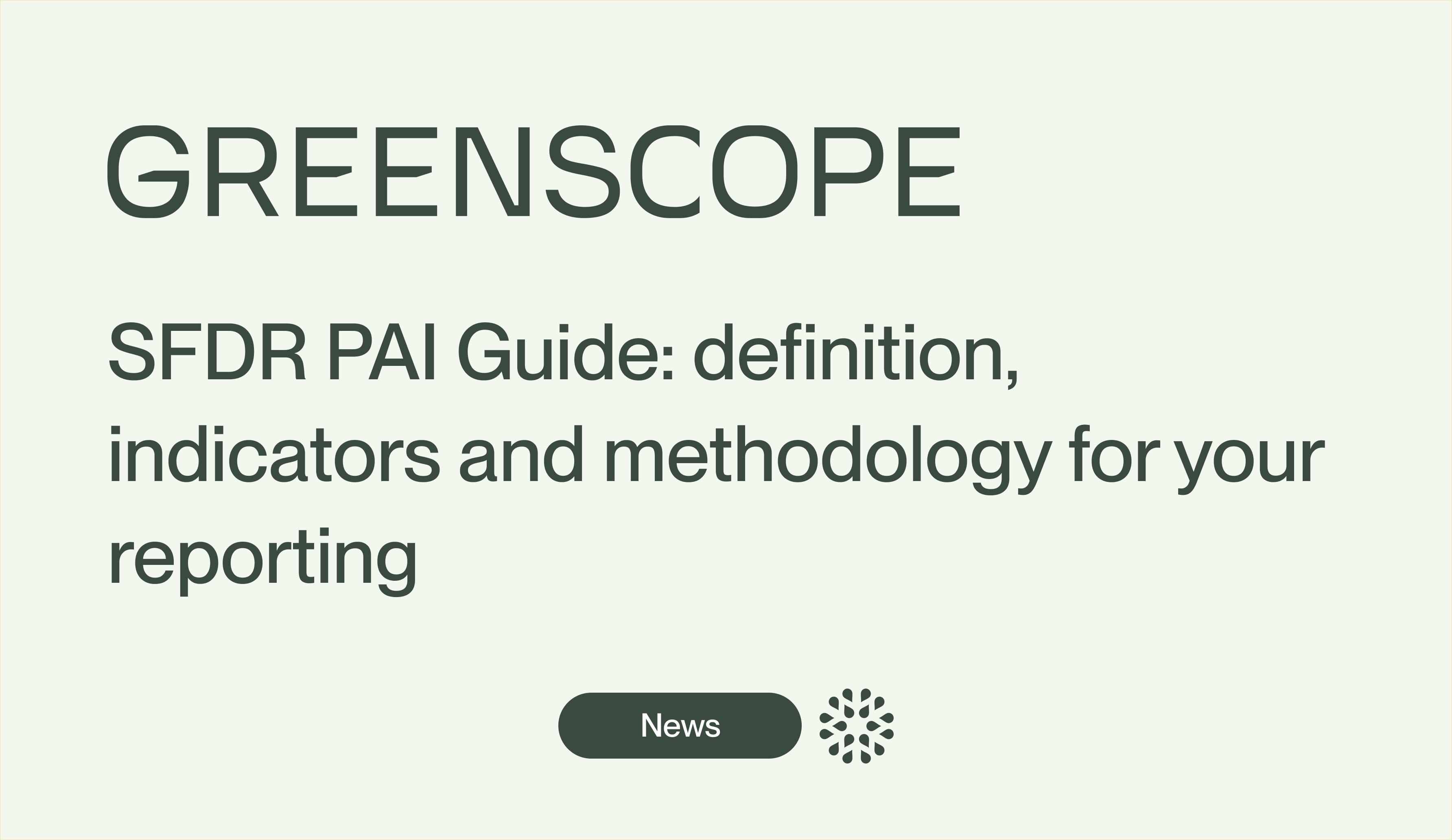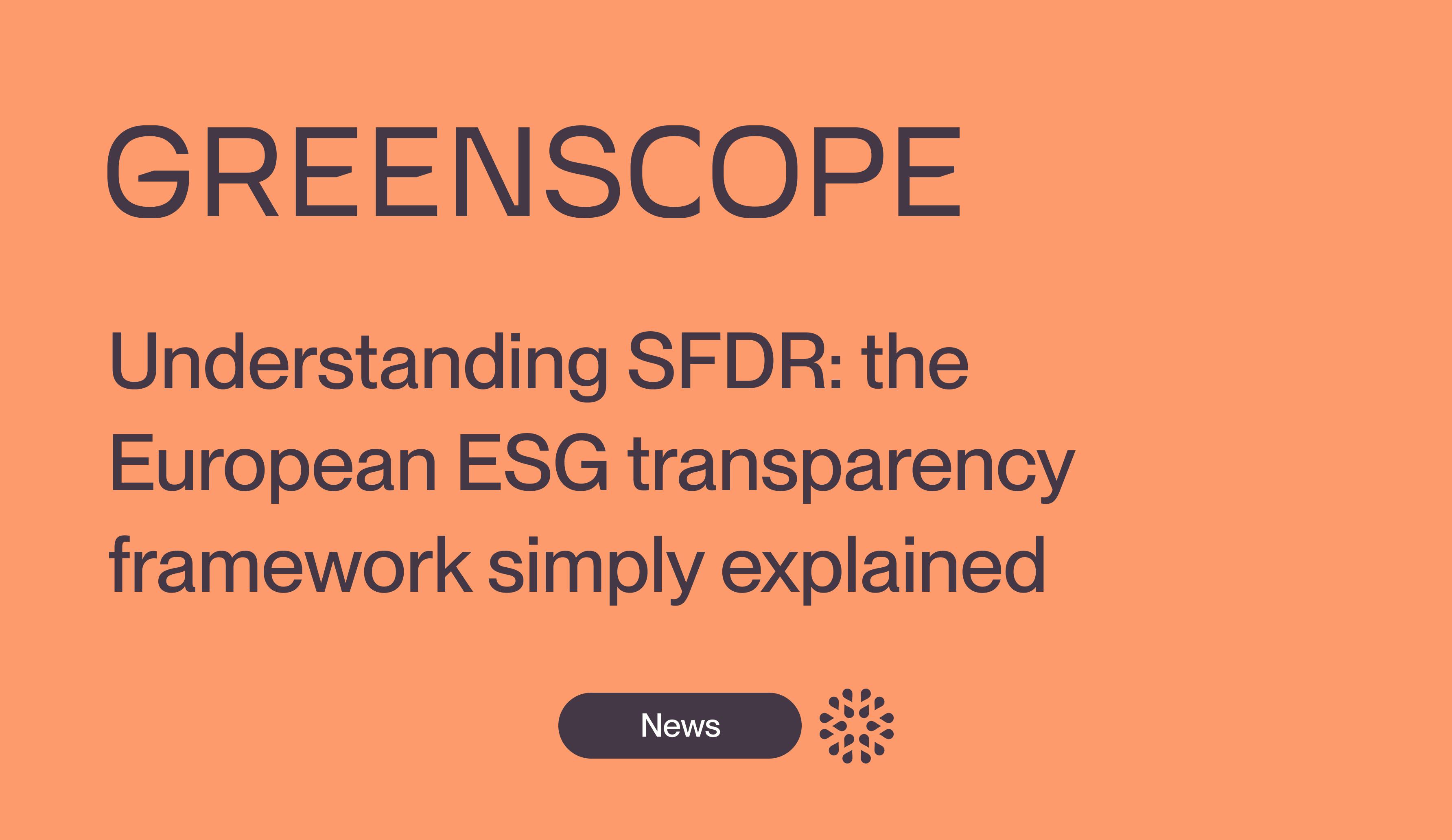SFDR PAI Guide: definition, key indicators, and methodology for your reporting
SFDR reporting: how to effectively structure your PAI disclosure

The disclosure of Principal Adverse Impacts (PAI) on sustainability factors is a central component of SFDR reporting. What exactly does PAI cover, and what are the obligations for financial market participants? This comprehensive guide will help you navigate the essentials!
What are PAIs?
Definition and relevant entities
PAIs (Principal Adverse Impacts) are indicators used to measure the most significant negative impacts of investments on environmental, social, and governance (ESG) issues. They were developed by the European Union as part of the SFDR (Sustainable Finance Disclosure Regulation).
Specifically, under the SFDR regulation, financial market participants must annually disclose how they take principal adverse impacts into account during their investment processes. This is commonly referred to as the “PAI disclosure.” The consideration of PAIs must be analyzed in light of a set of indicators covering key sustainability factors.
💡Take note: The SFDR regulation clearly distinguishes principal adverse impacts on sustainability factors (PAI) from external sustainability risks.
The latter refer to “environmental, social, or governance events or conditions that, if they occur, could cause an actual or potential material negative impact on the value of an investment.” These must be assessed separately from the PAI disclosure.
Taking PAIs into account under SFDR reporting is mandatory for:
- All financial market participants with more than 500 employees
- Financial market participants that are parent companies of a large group with more than 500 employees
For others, it is optional according to the “comply or explain” principle: financial market participants who declare they do not take PAIs into account must explain why and provide information indicating if and when they intend to do so in the future.
🔎 Key point: PAIs are a practical extension of the “Do Not Significant Harm” (DNSH) principle of the European Taxonomy. They are intended to provide investors with reliable indicators to help steer their investments towards sustainable options. More broadly, the goal is to enhance transparency around how financial entities’ investment decisions relate to sustainability.
Disclosure requirements
For in-scope entities, the PAI disclosure must occur at two levels: the management company level and the financial product level.
🔎 Focus: As a reminder, the SFDR regulation requires financial market participants to classify products into three categories:
- “Article 6” products that have no specific ESG features
- “Article 8” products that promote environmental or social characteristics
- “Article 9” products that aim to have a positive impact on the environment and society
PAI disclosure at the entity level (Article 4 SFDR regulation) | PAI disclosure at the financial product level |
|---|---|
Financial market participants who declare they account for PAIs must describe how PAIs are integrated into their management Consideration of PAIs may be quantitative and/or qualitative The scope must cover all investments—that is, all portfolios and all holdings (both sustainable and non-sustainable parts) Annual calculation of PAIs is required and must be published (PAI Statement) | Financial market participants required to account for PAIs must also disclose how their financial products address these impacts This disclosure only applies to so-called “Article 8” and “Article 9” products Consideration may be quantitative and/or qualitative Unlike entity-level disclosure, publishing a PAI calculation is not mandatory |
Types of impacts covered by PAIs under the SFDR regulation
PAIs cover three categories of impacts:
- Environmental impacts
- Social impacts
- Governance
These categories correspond to the environmental, social, and governance (Environmental, Social, and Governance - ESG) criteria used to assess and evaluate the consideration of sustainability in the strategy of economic actors.
The environmental criterion assesses an organization’s relationship with the environment and its commitment to sustainable development. It accounts for, among other things, greenhouse gas emissions, energy consumption, waste management and recycling, and respect for biodiversity.
The social criterion analyzes the direct or indirect impact of an organization on its stakeholders (staff, clients, etc.). This includes respecting labor rights, the quality of social dialogue, and training initiatives.
Finally, the governance criterion examines an organization’s decision-making processes, especially in terms of stakeholder needs and legal compliance. This includes transparency in executive compensation, anti-corruption measures, etc.
What are the key SFDR PAI indicators?
PAI disclosures by financial actors must include 14 mandatory indicators as specified in Annex I of the RTS (Regulatory Technical Standards):
Climate and Other Environmental Indicators
- Greenhouse gas emissions (Scope 1, Scope 2, and Scope 3)
- Carbon footprint
- GHG intensity of investee companies
- Exposure to companies active in the fossil fuel sector
- Share of non-renewable energy consumption and production
- Energy consumption intensity by high-climate-impact sector
- Activities negatively affecting sensitive biodiversity areas
- Emissions to water
- Hazardous waste and radioactive waste ratio
Indicators relating to social and employee matters, respect for human rights, and anti-corruption and anti-bribery issues
- Violations of UN Global Compact principles and OECD Guidelines for Multinational Enterprises
- Lack of processes and compliance mechanisms to monitor adherence to UN Global Compact principles and OECD Guidelines for Multinational Enterprises
- Unadjusted gender pay gap
- Diversity in the board of directors
- Exposure to controversial weapons (antipersonnel mines, cluster munitions, chemical and biological weapons)
In addition, these 14 mandatory indicators must be supplemented by at least one environmental and one social indicator chosen from the optional indicators lists in tables 2 (environment) and 3 (social) of Annex I RTS. There are 31 optional indicators in total.
Methodology for including PAIs in your SFDR reporting
The content, structure, and publication procedures for PAI disclosure are outlined in Annex I of the SFDR RTS. It stipulates that PAI statements must be published in a dedicated section of the website, entitled "Statement on Principal Adverse Impacts of Investment Decisions on Sustainability Factors."
Furthermore, the PAI disclosure must follow a standard model with 6 sections:
- Summary (including the financial market participant’s name, whether PAIs are considered, reference period, etc.)
- Description of PAIs (mandatory and optional indicators and measures taken during the reference period to avoid or reduce identified PAIs)
- Description of policies to identify and prioritize PAIs (allocation of responsibilities, methods used, etc.)
- Engagement policies
- References to international standards: specify if and to what extent the financial market participant adheres to codes of conduct for responsible corporate behavior and internationally recognized due diligence standards, as well as, where relevant, alignment with the Paris Agreement’s objectives
- Historical comparison: comparison with information provided in the previous PAI statement, if applicable
💡Note: The identification of both mandatory and optional indicators must be based on double materiality analysis, which considers both exposure to sustainability risks and the negative impacts on the environment caused by investee companies’ activities.
PAI disclosures must be published on the website by June 30 each year for the reference period from January 1 to December 31 of the previous year. It is important to start collecting relevant data well in advance of this deadline to ensure all required information is available in time.
What is the role of the Regulatory Technical Standards (RTS)?
The SFDR regulation has been supplemented by more detailed technical standards (Regulatory Technical Standards - RTS). These are set out in Delegated Regulation (EU) 2022/1288 of 6 April 2022, which entered into force on January 1, 2023.
The RTS provide detailed requirements on the content, methodologies, and format expected for the disclosure of sustainability indicators and principal adverse impacts. Annex I is particularly important as it sets out the calculation formulas for the different PAI indicators (emissions, carbon footprint, etc.) and the standard disclosure template.
The RTS are therefore essential for understanding what PAIs cover and how financial market participants must calculate and disclose them. Note that the RTS have also been supplemented by Q&A, which provide further clarifications on methodologies, content, and required format.
Our latest articles

CSR News - December 2025
Discover key developments: ongoing projects, standards updates, new official documents.

EDCI - Understanding the ESG Data Convergence Initiative to harmonize ESG reporting in Private Equity
Simplify and standardize your ESG data with EDCI.

Understanding SFDR: The European ESG transparency framework made simple
Understanding SFDR means understanding what structures sustainable finance in Europe. Requirements, tools, impacts: let's break it down.

CSR News - November 2025
Discover key developments: ongoing projects, standards updates, new official documents.



